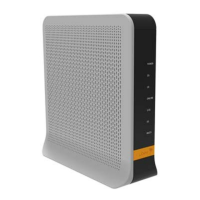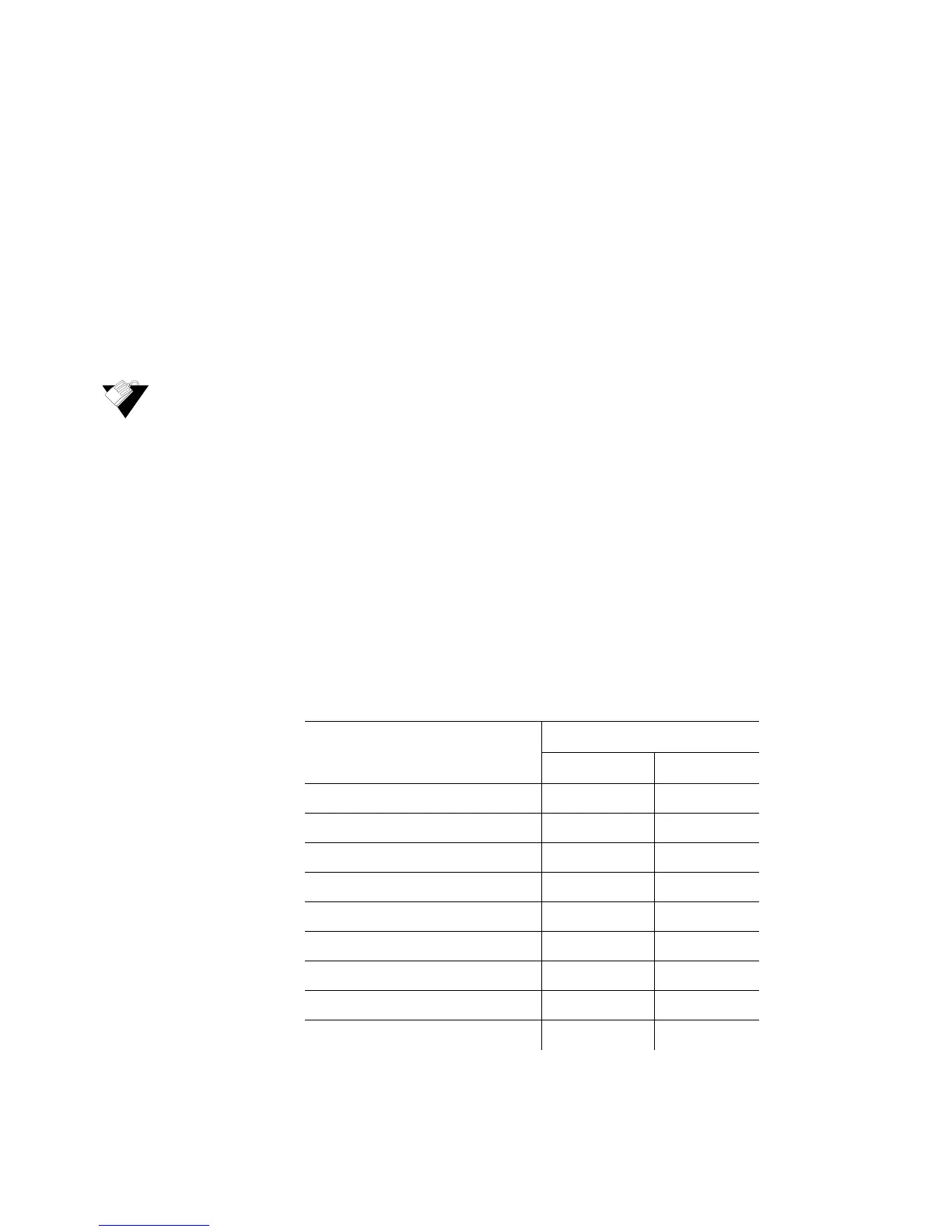Ubee Interactive Deploying and Troubleshooting the Wireless Network
Ubee DDW36C Advanced Wireless Gateway MSO Operations Guide • October 2015 88
To determine the received signal strength, refer to Using the Access Control Option on
page 82 and review the RSSI value. A receive signal strength indicator between 0 to -64
dBm is considered optimal. Levels of -67dBm and lower (for example, -70, -80, etc.) have
a downward impact on wireless data throughput.
9.7.2 Estimating Wireless Cable Modem to Wireless Client Distances
The information in this section helps you to determine how far a wireless cable modem
can be placed from wireless client devices. Environmental variances include the
capabilities of wireless clients and the types of material through which the wireless signal
must pass. When the wireless cable modem and wireless clients reach the distance
threshold between each other, network performance degrades.
To determine wireless cable modem placement:
1. Connect a wireless client to the wireless DDW36C. Refer to Connecting Devices to the
Network on page 11 if needed.
2. Place the wireless client at around one meter (three feet) away from the DDW36C.
3. Obtain the RSSI value for the connected client. Refer to Using the Access Control
Option on page 82. This value is used in the formula further below.
4. Use the following table to determine what materials the wireless signal must travel
through to reach the desired wireless coverage distance.
5. Use the following table to determine what materials the wireless signal must travel
through to reach the desired wireless coverage distance.
Attenuation Considerations
Material
Attenuation
2.4GHZ 5GHz
Free Space 0.24dB / foot 0.3dB / foot
Interior Drywall 3dB to 4dB 3dB to 5dB
Cubicle Wall 2dB to 5dB 4dB to 9dB
Wood Door (Hollow/Solid) 3dB to 4dB 6dB to 7dB
Brick, Concrete Wall (Note 1) 6dB to 18dB 10dB to 30dB
Glass Window (not tinted) 2dB to 3dB 6dB to 8dB
Double Pane Coated Glass 13dB 20dB
Bullet Proof Glass 10dB 20dB
Steel / Fire Exit Door 13dB to 19dB 25dB to 32dB

